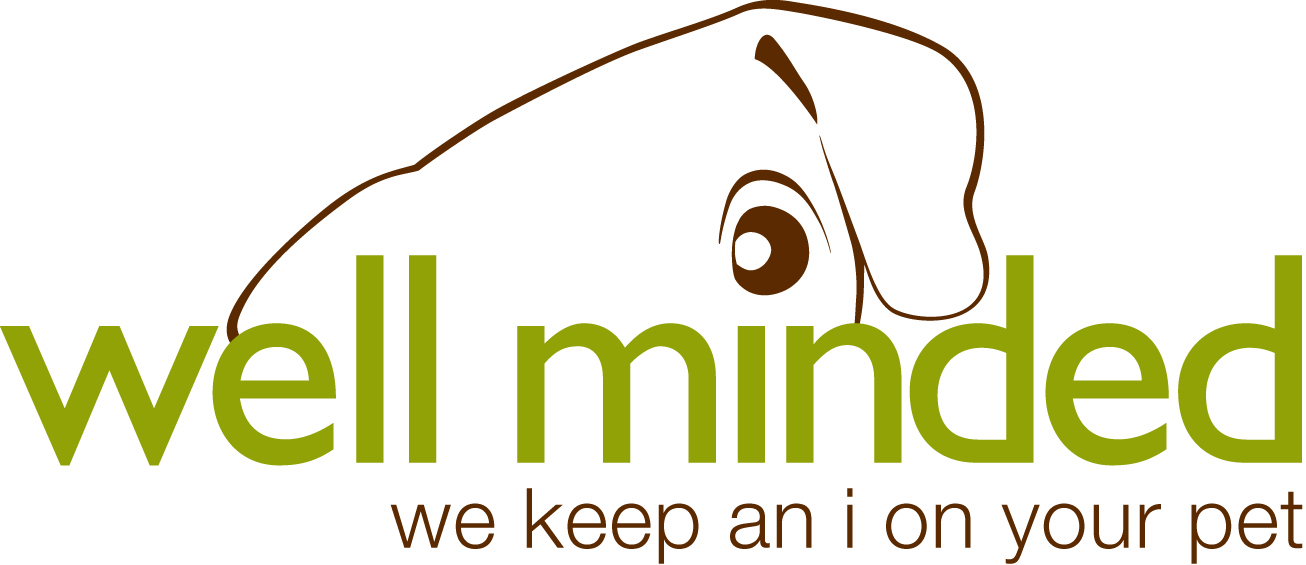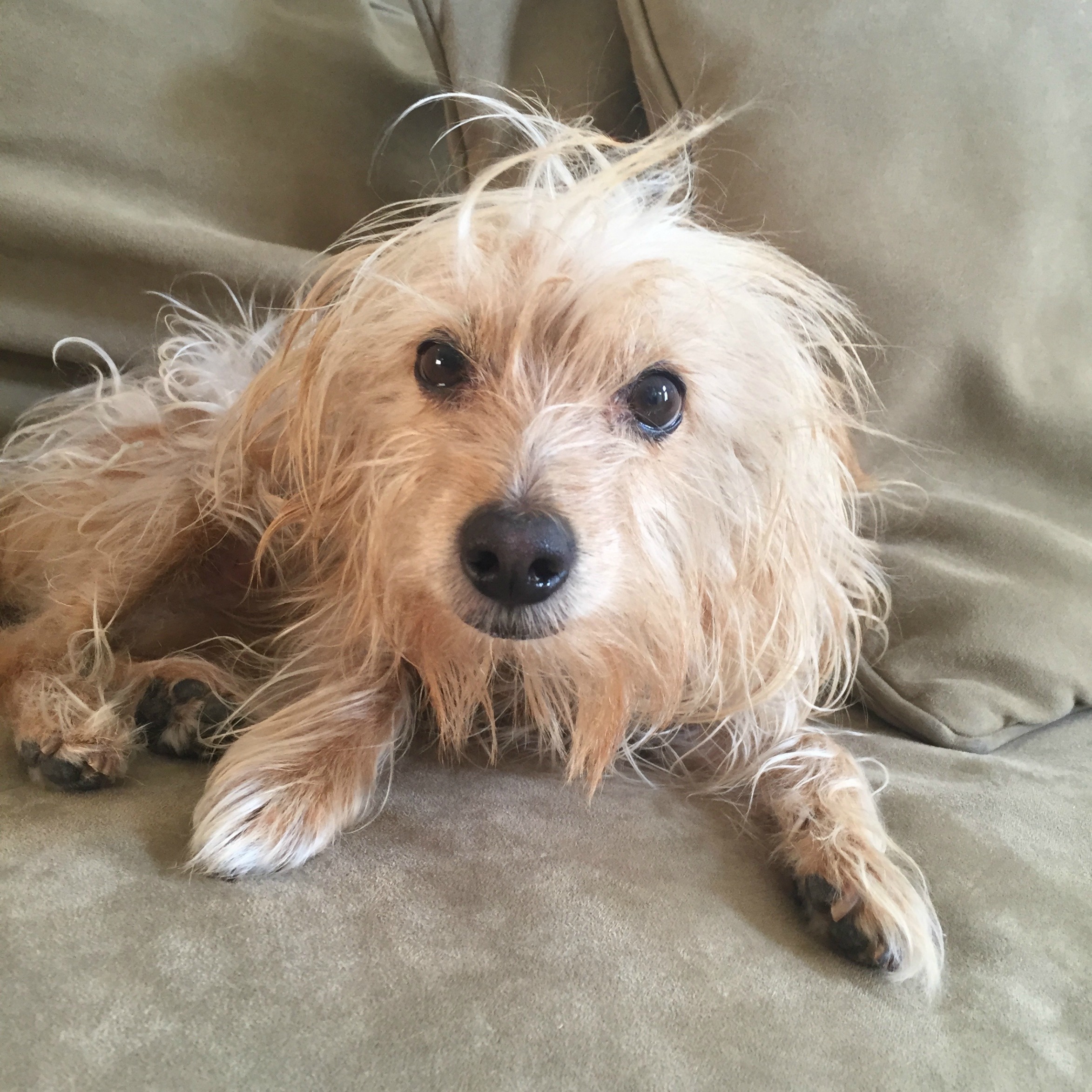We recently submitted a canine DNA test kit to Wisdom Panel®, and I'm here to reveal the semi-surprising results! Why would we want to do a DNA test on our dog? Well there are lots of benefits to doing so, but in our case, we were just really curious about what dog breeds make up N.A.S.H.A. For her whole ten-year life, we've been calling her our "terrier mix," affectionately aka our "terror mix." She looks like a mix of terrier breeds with maybe a dash of Chihuahua. That's what we thought, anyway.
Our Wisdom Panel® Canine DNA Test results are in...with surprising results! wellmindedpets.com
our results
It turns out the main breeds that make up N.A.S.H.A. are not terrier breeds at all! Drumroll, please...N.A.S.H.A. is a: CHIHUAHUA, ALASKAN MALAMUTE, AMERICAN COCKER SPANIEL MIX.
What the?!
Would you have guessed this scruffy little girl to be a Chihuahua, Alaskan Malamute, Cocker Spaniel mix?
Chihuahua...okay, sure. But Cocker Spaniel? And the largest reach...Alaskan Malamute? I'll admit, I cracked up for a long time when I read that. It's SO surprising! And truly funny, if you remember how N.A.S.H.A. got her name. My Siberian Husky-obsessed husband named her as an acronym for "Not A Siberian Husky Again." The Husky is very commonly confused with the Malamute due to their similar appearance. I called my husband immediately: "Honey, it turns out she IS sort-of a Husky!"
But Wisdom Panel doesn't just drop that bomb in your lap and walk away. They go into detail about the characteristics of each breed your dog likely displays and how closely related your dog is to each breed.
the details of our canine dna test
Considering we've been calling N.A.S.H.A. a mixed terrier for her whole life, we were pretty surprised with the results of her DNA test. The main breeds the test detected were Chihuahua, Alaskan Malamute, and Cocker Spaniel, but she also has a lot of "mixed breed" ancestors, so really, she's a crazy mixed-up mutt, as we expected.
The results of our Wisdom Panel 3.0 Canine DNA Test
Though the breed composition of the "mixed breed" ancestors is unknown, Wisdom Panel provides a chart that describes what the most likely breed groups are...so cool! It turns out there is some terrier in there, but it's the smallest of the groups. Wow!
N.A.S.H.A.'s mixed-breed ancestry.
It turns out N.A.S.H.A is likely mostly of the sporting breed variety. I always knew she should have been a circus dog. Perhaps we can teach our old dog some new tricks!
In addition to outlining which breed groups are likely in her mixed-breed ancestry, our report detailed the characteristics of the main breeds in her genetic makeup.
Chihuahua characteristics.
I suspected N.A.S.H.A. had a bit of Chihuahua in her, and, sure enough, she exhibits quite a few Chihuahua traits. She is super playful, responds well to reward-based training, and is quite a barker (like, if a butterfly threatens to invade our home, all hell breaks loose). Aside from her size (slightly larger than a typical Chihuahua) and curved tail, I don't notice much physical resemblance.
Alaskan Malamute characteristics.
N.A.S.H.A. is incredibly smart when it comes to being responsive to commands and routines, which she may get from her Alaskan Malamute ancestry. We should have done some agility training with her! As far as physical resemblance? I don't see it! Just don't tell my husband...let him have his fantasy.
Cocker spaniel characteristics.
Again, the Cocker Spaniel is an energetic, happy breed, like the others. They respond well to reward-based training (YES), and bit defensive (butterfly invasion). I'm thinking her physical traits must come from her mixed breed ancestry, because, again, I just don't see it.
health benefits of a canine dna test
I previously outlined the process and benefits of conducting a canine dna test with Wisdom Panel. Aside from being fun and totally non-invasive, the test provides information about possible health risks and issues, which can be helpful in being proactive about your dog's health.
Through an MDR1 Screening, we discovered that N.A.S.H.A. does not have the MDR1 gene mutation that is common with mixed breed dogs. I believe that because of her mixed heritage, she's not obviously at risk for any major health issues.
Our MDR1 screening results.
should you perform a dna test on your dog?
Aside from being really fun to find out which breeds your dog decends from, especially if you have a mixed-breed dog, performing a DNA test on your dog can reveal characteristics you may want to be warned about or you may want to play into, such as intelligence or training capability. The test can also reveal health risks you can be proactive about.
Should you want to purchase a Wisdom Panel Canine DNA Test for your dog, they are kindly offering our readers $15 OFF with PROMO CODE FF6001807KR.
Has your dog taken a canine DNA test? Were you surprised with the results?
















